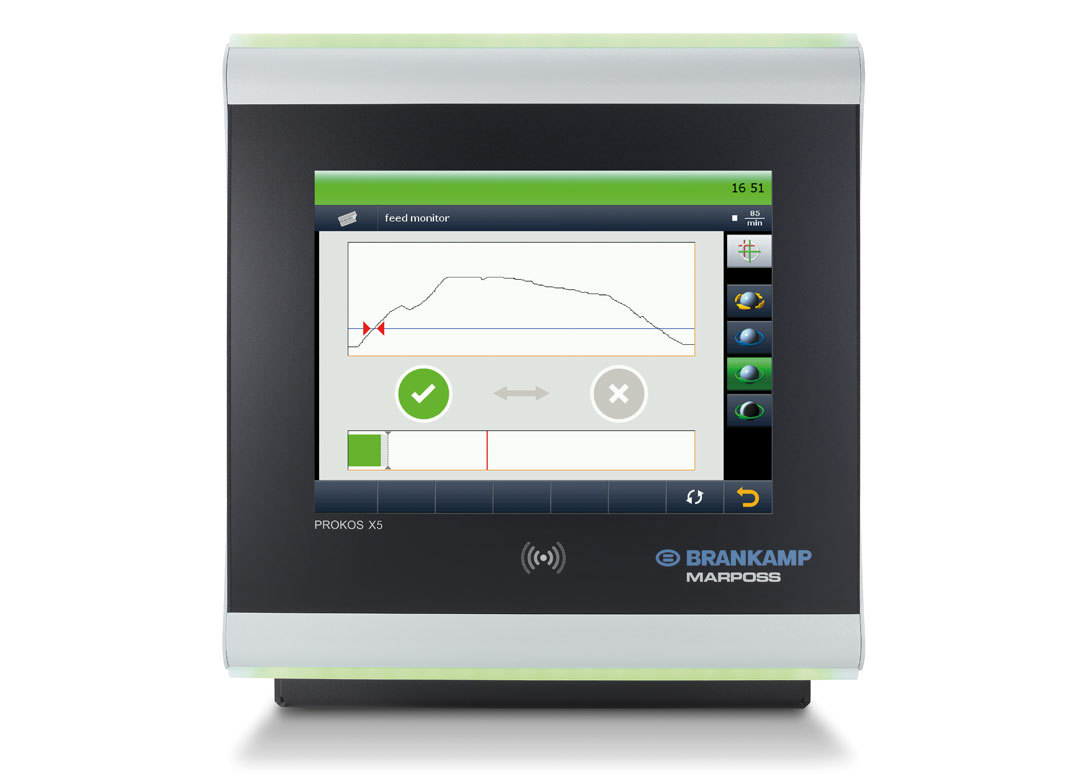
In cold forming, the insertion of the blank into the forming tools is particularly important with regard to process stability and susceptibility to failures. Particularly in thread or form rolling with flat dies, the insertion of the blanks into the rolling tools significantly determines the quality of the forming process.
This is why flat die rollers are equipped with process monitoring systems as standard. Modern process monitoring systems, such as the Brankamp X5, monitor the rolling process, detect roll backs and automatically control the die match (ADM®) if the dies are not aligned. To ensure that the quality monitoring integrated into the process does not impair the productivity of the machine, parts detected as faulty are separated from the good parts by a sorting device without interrupting the production. Of course, it is desirable to determine the cause of the defect in the case of sorting.
The X5 offers so called pusher monitoring for this purpose. The image shows the corresponding screen on the X5 unit. The upper half of the menu shows the rolling curve. The insertion area is marked with two arrows. Below the rolling curve, the reproducibility of the insertion process is shown by a horizontal bar in drag pointer mode. The size of the bar correlates with the stability of the insertion process. It helps the operator to find an optimum setting during set-up for dynamic operation at nominal machine speed. In the case of pushers, whose drive is coupled to the crankshaft, the shifting of the front dead centre in the direction of the rolling gap usually helps. Modern flat die thread rollers have insertion pushers, which are moved by a linear motor. With these systems, the operating force can also be adjusted.
After set-up, the insertion process is continuously monitored. If the reproducibility of the insertion now deteriorates during ongoing production, the Brankamp X5 generates a corresponding warning message. Even if the parts slide slightly during insertion, this results in clear deflections of the drag pointer. Thus, it becomes apparent afterwards that the cause of rejected parts was a faulty insertion. In these cases, the operator corrects the insertion process and zeros the drag pointer.

Biog
Having spent a decade in the fastener industry experiencing every facet – from steel mills, fastener manufacturers, wholesalers, distributors, as well as machinery builders and plating + coating companies, Claire has developed an in-depth knowledge of all things fasteners.
Alongside visiting numerous companies, exhibitions and conferences around the world, Claire has also interviewed high profile figures – focusing on key topics impacting the sector and making sure readers stay up to date with the latest developments within the industry.








